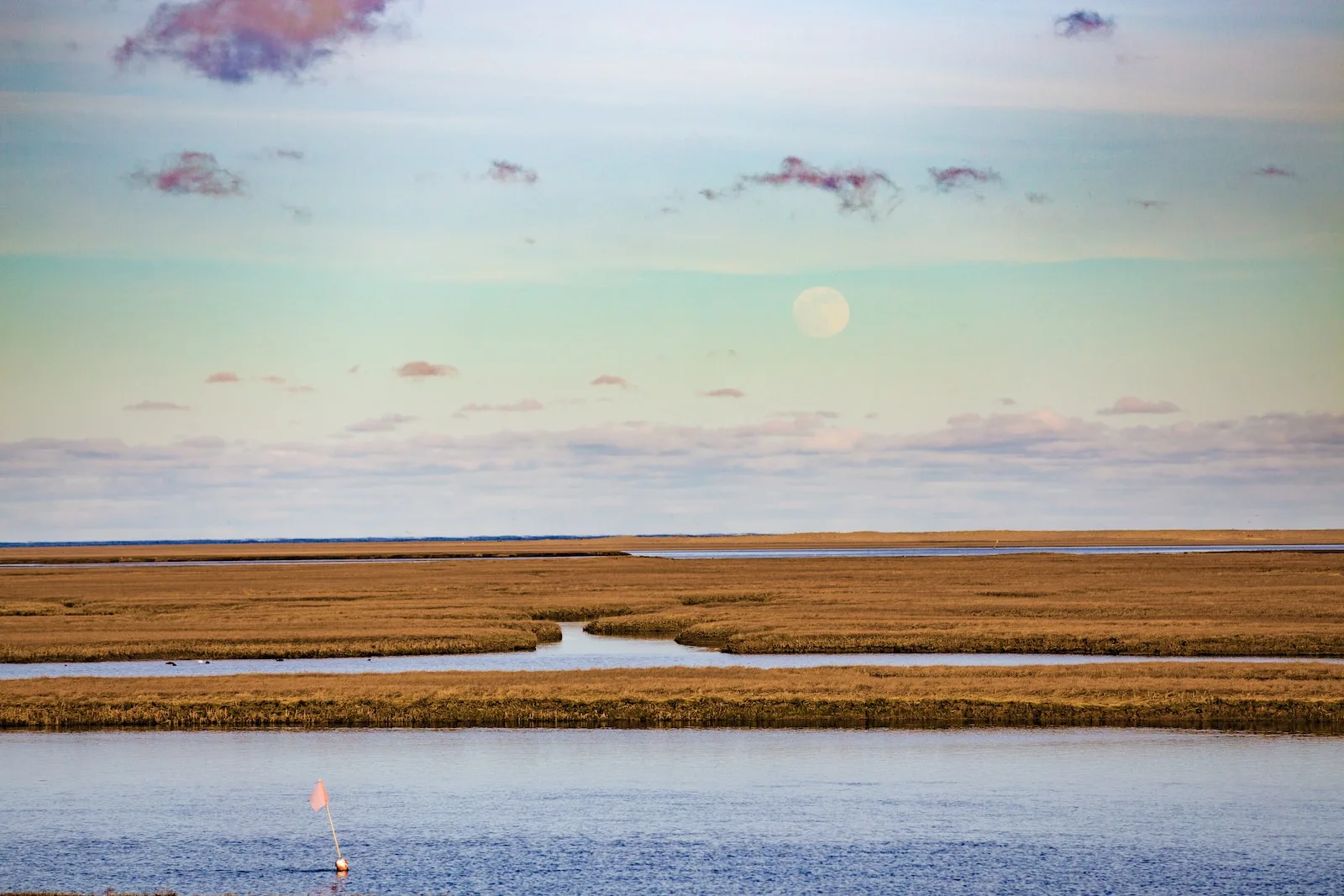Lapis Lazuli versus Emerald Tapestry – An Overview of Lagoons and Marshes
Have you ever pondered over the captivating charm of lagoons, those cerulean mirrors that reflect the sky’s grandeur? Or contemplated the emerald tapestry that is a marsh, its verdant whispers subtly echoing across quiescent waters? These aquatic phenomena, both resplendent in their allure, constitute an integral part of our natural landscape.
Yet they remain tragically underappreciated by a populace wilfully ignorant to their nuanced differences. Lagoons are nature’s azure canvas, kissed by oceanic brine yet held in tender embrace by terrestrial arms.
They serve as havens for unique aquatic lifeforms who find sanctuary within their shallow depths, offering themselves as exquisite stages for mother nature’s most enthralling performances. Meanwhile, marshes are where land coyly flirts with water — an endless waltz between solid and liquid resulting in a confluence that breathes life into an array of flora and fauna.
The Marvelous Mirage or the Green Enigma – Why Understanding Their Differences Matter
People often dismiss distinctions between lagoons and marshes with a laissez-faire attitude that does little more than expose their own intellectual lethargy. This cavalier indifference towards understanding the nuances between these two ecosystems borders on scandalous! How can we look out at these bodies of water and not be driven to understand their distinct characteristics?
It’s like trying to appreciate Van Gogh while colorblind! Understanding what separates lagoon from marsh goes beyond mere academic indulgence; it is about acknowledging nature’s intricate diversity, dissecting her cryptic language so we can better appreciate her mystifying beauty.
The different conditions found in these environments shape unique ecosystems teeming with life – from microorganisms vital for nutrient cycling to water birds acting as indicators of ecological health. Ignorance breeds indifference; knowledge fosters respect – let us cast off apathy’s shroud and delve into the fascinating details that set apart these aquatic wonderlands!
Azure Arcanum: Definition and General Characteristics of Lagoons
Oh, lagoons! They are not mere indentations or recesses in the coastline; they are worlds within our world.
Distinct entities harboring their own unique ecological setups. Now, many mistake them for lakes or ponds.
Let’s clear that confusion at once. Lagoons are shallow bodies of water separated from larger water bodies (like seas or oceans) by barrier forms such as sandbars, coral reefs, or barrier islands.
These enchanting oases of tranquility often lie parallel to the shoreline providing a spectacle in which one can lose themselves contemplating the beauty of nature. Their depths?
Rarely profound! Usually, they maintain a comfortable wading level giving them an inviting touch.
Mirrors Across the Map: Geographical Distribution
Lagoons don’t discriminate when it comes to geography; you’ll find them peppering coastlines across all continents. From the sun-kissed shores of Florida to Sardinia’s rugged coast in Italy, and stretching to Australia’s Great Barrier Reef where they form idyllic pools within coral atolls; these blue mirrors reflect Mother Nature’s crowning glories. They find haven both in cool temperate zones like those found along Denmark’s Jutland Peninsula and tropical climes such as India’s Chilika Lake spreading their charm universally.
Blue Variety: Types Of Lagoons – From Coastal To Atoll And Tidal
Did you think all lagoons were alike? Oh no, my dear reader!
Just like us humans with our myriad personalities and quirks, lagoons too come with their own distinctive features. Take coastal lagoons for instance – nestled between mainland and marine deposits – they house ecosystems that would leave Charles Darwin himself besotted!
Then there are atoll lagoons, circled by coral reefs rather than land deposits, hosting a different yet equally mesmerizing array of underwater life. Yet importantly we have tidal lagoons- created by tides carving out hollows on sandy or silty coastlines- playing hide-and-seek with us depending on tide levels!
Nature’s Sculpting Tools: Formation Process
Nature is an artist par excellence and her tools? Geological factors such as glaciation and climatic influences like waves and wind currents shape these azure havens into existence.
Glacial processes carve basins into coastlines while sea level fluctuations fill up these depressions creating coastal lagoon masterpieces. Tidal currents sweep back sediments forming shallow pools along shorelines – voila!
You have tidal lagoon buddies here! Coral reef growth forms enclosures within oceans leading to birth of atoll lagoon wonders!
Life’s Aquatic Cradle: Ecological Significance
The ecological significance of these aqua sanctuaries mustn’t be undermined! They act as cradles for a diverse range flora & fauna specific to these habitats Many endangered species call it home making it crucial for biodiversity conservation efforts.
They perform nutrient cycling duties surpassing any advanced waste treatment facilities made by humankind. Their seagrass beds act as carbon sinks – combating climate change much more effectively than any summit meeting!
Lagoon ecosystems play host to various birds during migratory seasons laying out an ornithologist’s dream buffet spread! The fisheries industry thrives due thanks hugely to the nurturing brackish waters supporting fish populations making human lives richer…literally!
Let not their serene demeanor deceive you – Like silent warriors they protect mainland from storms & tidal surges acting as natural barriers embodying strength in tranquility perfectly! No wonder many indigenous cultures hold deep reverence towards these aqua mirrors paying tribute through folktales & traditions binding man & nature in harmonious coexistence.
The Elusively Defined Marshland – A Wonderland, or Just Soggy Dirt?
You know, it’s interesting. People tend to dismiss marshes as just “soggy dirt,” but that description couldn’t be further from the truth. Yes, the word ‘marsh’ might conjure up images of squishy mud between your toes, or perhaps a dreary, desolate landscape filled with nothing but muck.
But come on now; it is time to pull those boots out of the mud of ignorance and into the light! A marsh is a wetland ecosystem characterized by water-saturated soils and vegetation that thrives in their soggy embrace.
When we talk about where marshes are found… oh boy. You could travel across almost every continent and find these drenched landscapes flaunting their unique beauty.
They occur broadly across the globe from subtropical to arctic regions. From North America’s Everglades to flush expanses of European Marshlands, they are geographically omnipresent.
Typecasting Marshes – Not All Muddy Waters Look Alike
For those who think all marshes are created equal? Think again!
There are freshwater marshes that form along rivers and lakes, saltwater marshes found along coasts where seawater floods in with the tides, and brackish types born where freshwater meets saltwater. Each has its unique personality and ecological importance.
The formation process of a marsh is some kind of beautiful slow dance between Earth & Water choreographed by Mother Nature herself over thousands of years. Geologically speaking this involves sediment deposition carried by rivers leading to soil build-up while climatically it is influenced by precipitation rates which enable accumulation of water over low lying areas.
A Green Lung in a Blue World – Every Breath We Take
I’ll tell you one thing for certain; we owe our very next breaths to these unsung ecological heroes known as Marshlands! Acting like lungs for our planet they absorb carbon dioxide during photosynthesis releasing oxygen back into our air. As for flora & fauna specific to marshlands… let your imagination run wild!
The plant life here reads like an epic saga featuring sedges, rushes & reeds as regular characters with occasional cameo appearances by colorful wildflowers like irises & lilies! Animal-script isn’t any less enchanting either with everything from egrets & herons gracing skies above while frogs croak symphonies at night as otters shyly peek out nearby!
Their role in our ecosystem? It’s crucial beyond measure!
They act as natural water purifiers absorbing pollutants while also serving as a buffer against coastal storms reducing flood risks & preventing shoreline erosion. So there you have it folks: next time someone dismissively talks about “Marshland”, remind them it’s not just soggy dirt; It’s “Earth’s Green Lung” gasping under blue sky!
Physical Differences – Reading Nature’s Blueprint
You know what really grinds my gears? It’s the flagrant lack of recognition for the stark physical differences that separate lagoons from marshes.
Have we become so detached from our natural world that we can’t differentiate between these two fantastic features of it? If you’re one of those people who think that water salinity levels aren’t a big deal, then I have news for you.
It is! Lagoons are brackish or marine in nature, their waters bear the salty kiss of the sea.
Marshes, on the other hand, can be freshwater, brackish or saltwater – indicating a variable salinity level. And don’t get me started on variations in depth and size!
One could argue that size doesn’t matter but it certainly does in this case. Lagoons are typically larger and deeper than marshes; they’re not afraid to take up space and flaunt their depth.
And as for location? Well, let’s just say a lagoon isn’t shy about cuddling up to an ocean or a sea while marshes prefer inland areas or places near rivers and lakes.
Biological Disparities – Life’s Diverse Palette
The audacity to ignore distinct biological disparities among lagoons and marshes is quite something! Each teems with its unique array of flora and fauna – offering splendid spectacles of life’s diverse palette.
In this corner, boasting a lineup featuring seagrasses, mangroves & algal mats are our dear old lagoons. They house fish species like mullet & sea bass along with crustaceans like crabs & lobsters – each contributing to their rich biodiversity.
In comparison, enter marshlands with a botanical force of reeds, cattails & rushes complemented by animals like muskrats & birds including egrets & herons. The diversity found within these habitats is mind-boggling if only people would take time to notice!
Conclusion
– yes there are undeniable differences between lagoons and marshes! It’s high time we appreciate each for their unique contribution to our planet instead of lumping them together as some sort of homogenous ‘water-land’. For those who still insist otherwise – perhaps it’s time for some field trips!
But let’s end on an optimistic note: I believe that we can all learn to love these ecological jewels simultaneously acknowledging their distinctions. Remember – variety is not only the spice of life but also its very essence.
 Skip to main content
Skip to main content



